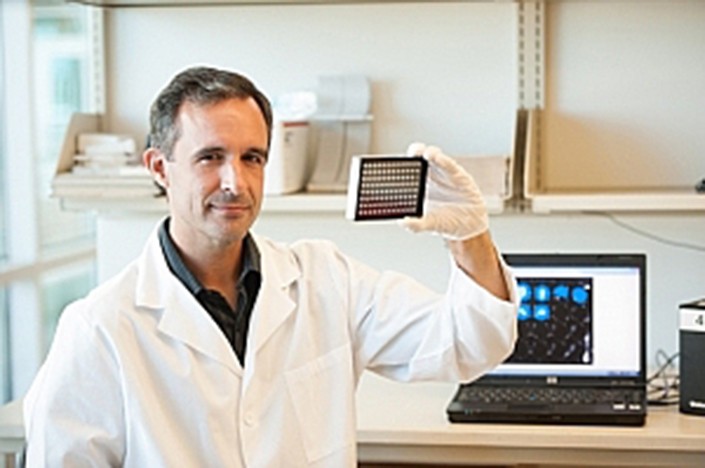Better diagnostic tools may help manage second-deadliest infection

Image: Texas A&M Health Science Center
A researcher at the Texas A&M Health Science Center is designing diagnostic tools to help the world to better manage its second-deadliest infectious disease among humans: tuberculosis, also known as TB.
The disease kills someone every 20 seconds. Half of those deaths are among children. New cases are erupting at the rate of 9 million per year, generally in regions of the world with the fewest resources for dealing with the disease. Worse, new strains of tuberculosis are emerging that are highly resistant to drug therapies.
For Jeffrey Cirillo, a professor of microbial pathogenesis and immunology in the center’s College of Medicine, the long-term goal is eradication – a possibility that Cirillo and his international collaborators discussed at the George H.W. Bush Sixth China-U.S. Relations Conference, held in Houston during May.
Meanwhile, Cirillo and his research team continue to develop diagnostic tools to assist underdeveloped nations in combatting the diseases.
For example, Cirillo and his lab have created a portable, low-cost diagnostic device known as TB REaD, which is undergoing clinical trials in Thailand, Peru, South Africa and Vietnam through the World Health Organization and other partners. The device shortens the diagnosis from several days to 10 minutes, and will provide a much earlier identification of contagious carriers.
“It will make a huge difference to be able to diagnose earlier,” Cirillo said, “Until now, we really haven’t had anything to diagnose TB rapidly, particularly in low resource settings, and particularly in pediatric cases.”
The lab team is also advancing a diagnostic test to detect a non-pulmonary form of tuberculosis in children, and a molecular test to identify a strain’s resistance to antibiotics within two hours.

